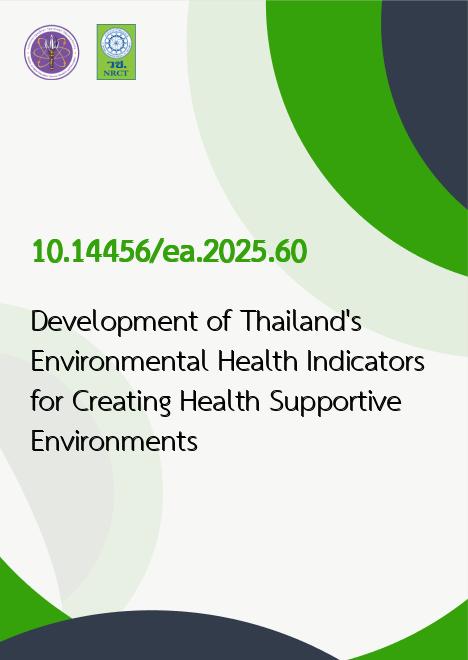
|
Development of Thailand's Environmental Health Indicators for Creating Health Supportive Environments |
|---|---|
| รหัสดีโอไอ | |
| Creator | Siranee Sreesai |
| Title | Development of Thailand's Environmental Health Indicators for Creating Health Supportive Environments |
| Contributor | Panita Charoensuk, Chanajit Pan-Ao, Siranee Sreesai |
| Publisher | Thai Society of Higher Education Institutes on Environment |
| Publication Year | 2568 |
| Journal Title | EnvironmentAsia |
| Journal Vol. | 18 |
| Journal No. | 3 |
| Page no. | 170-180 |
| Keyword | Environmental health indicator, Health supportive environment, Rural community, Urban community, Special urban community |
| URL Website | http://www.tshe.org/ea/index.html |
| Website title | EnvironmentAsia |
| ISSN | 1906-1714 |
| Abstract | There are many constrains from application of environmental health services and practices across different geographic and urbanization of community settings. This study aimed to develop environmental health indicators to support the creation of health-promoting environments in rural, urban, and special urban communities in Thailand. A mixed-method research approach was employed, including a literature review, establishing indicator selection criteria through expert consultations using the Delphi technique, and focus group discussions with representatives from the target communities. Additionally, household-level field surveys were conducted. The proposed indicators were validated using exploratory factor analysis. The findings categorized the environmental health indicators into eight primary dimensions: (1) air pollution, (2) housing (3), sustainability, (4) water and food sanitation, (5) nuisance management, (6) water usage and wastewater, (7) solid and hazardous waste management, and (8) excreta management. A total of 40 variables were identified for rural and urban communities, and 42 variables for special urban communities. It suggested that these components can serve as a guideline for assessing environmental health conditions at the community level and can inform the development of appropriate policies and actions to promote supportive environmental health in Thailand. |